the art of CMB >
biography ![]() flower fairy books
flower fairy books
The Art of
Cicely Mary Barker
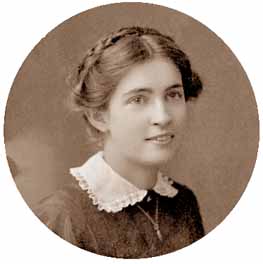
![]()
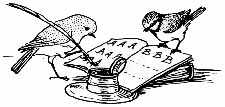
(1895 - 1973)
Cicely Mary Barker was born on June 28 in Croydon, South London in 1895, to Walter Barker and Mary Eleanor Oswald. Walter Barker was descended from a long line of wood carvers, a profession which he also pursued. In 1909, he donated a hand-carved pulpit to the family church, St. Edmund’s in Croydon. In 1907 her family came to live at 17 The Waldrons where the stayed until their move to number 23 in 1924. She was a frail child who suffered from epilepsy, a condition which disappeared after World War I and never afflicted her again. Her father was an accomplished artist and encouraged her talent.

Cicely Mary Barker was educated primarily at home by governesses. And began to draw at a young age. When she was 13 years old her father enrolled her at the Croydon Art Society (evening classes) and also paid for her to take a course in art through a correspondence school, which she continues until 1919. It provided her with details and the constructive criticism that she needed. Although she received no formal art training, her natural talent was recognized at age fifteen when a set of 6 postcards she painted was accepted by a publisher. Her father took examples of her work to the publisher Raphael Tuck. They were bought by them and published as a set of postcards. The next year, she won second prize in a poster competition run by the Croydon Art Society. She was soon elected to life membership in the Society, becoming their youngest member. She which she continued to attend evening classes at the Croydon Art Society into the 1940’s, eventually earning a teaching position there.
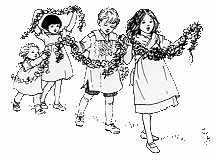
Cicely Mary Barker had a special relationship with her father. He was proud of her and fond of calling her ‘Ciskin’. After her father’s untimely death in 1912, her older sister, Dorothy, tried to support the family with her small teaching salary. Barker also tried to help by selling poetry and illustrations to magazines such as My Magazine, Child’s Own, Leading Strings and Raphael Tuck annuals.
The best known books in which her first pictures were published are 'Shakespeare's Children', 'Children of the Allies' and the delightful early 'Fairy Cards'. When Cicely's father died in 1912 she began to dedicate her art to the Pre-Raphaelite movement in the peaceful atmosphere of The Waldrons, Cicely began to create the Flower Fairies.
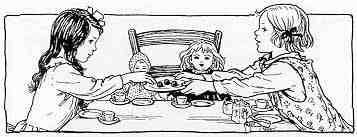
Fairies were a popular topic at this time, Sir Arthur Conan Doyle’s book The Coming of the Fairies had been published only the year before and included five photographs of fairies taken by two little girls. The photographs had been declared genuine by an expert only to be proven fakes in the 1980’s. Queen Mary was fond of the fairy-themed work of the Australian Ida Rentoul Outhwaite and would send out postcards with her fairy images to her friends. It was also a time when people wanted to escape the harsh realities of progress, and return to a simpler and more innocent pre-scientific age.

Cicely Mary Barker’s fairies were based on her knowledge of plants and flowers and her artistic studies of real children, each dressed to represent a different flower. She always strove to reproduce the flowers and plants in her paintings as accurately as possible, often frequenting a local garden for material. The success of her first volume in 1923, which she also wrote, led to the creation of seven more. Cicely would create and fashion costumes for the children to wear while posing, complete with wings made of gauze and twigs. Barker created a new costume for each of the fairies, carefully taking them apart when she was done in order to reuse the fabric. She never compiled a book of winter flower fairies. It was not until 1985, 12 years after her death, that Flower Fairies of the Winter was compiled from illustrations and poems in her other 7 Flower Fairies books.
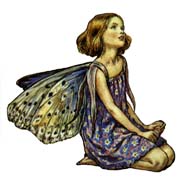

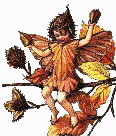
In 1924 Cicely Mary Barker had a studio built in the garden of their home at 23 The Waldrons, which also housed her sister’s kindergarten school. In 1961, she told a Croyden Advertiser reporter,
"My sister ran a kindergarten and I used to borrow
her students for models.
For many years I had an atmosphere of children about me.
I never forgot it."

Her first book, Flower Fairies of the Spring, was published to much acclaim in 1923. Additions to this series continued through 1948 and established her as one of the foremost illustrators of her time. Her books have passed into English literary and artistic history as children's classics. Her Flower Fairies books brought her international acclaim as an artist. The delicate charm of her illustrations, coupled with her meticulous botanical accuracy, has captivated both children and adults alike for nearly 70 years.
Many of the students appeared as her Flower Fairies until 1940 when her sister closed down the school. After Dorothy died in 1954, Barker designed a stained glass window for St. Edmund’s Church in memory of her sister.
Cicely Mary Barker was a devout Christian, contributing designs for postcards and greeting cards over the years to the Society for Promoting Christian Knowledge, the Girls’ Friendly Society, and the Society for the Propagation of the Gospel. In 1925, one of these paintings, ‘The Darling of the World is Come’ was purchased by Queen Mary. In addition, she also made paintings for churches, as well as donating paintings to help raise money.
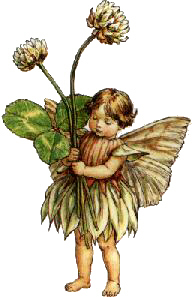
Cicely Mary Barker continued to paint until her eyesight began to fail her towards to end of her life. She died on February 16, 1973 at the age of 77 years old in the Worthing Hospital. Coincidentally, it was the fiftieth anniversary of the publication of her first ‘Flower Fairy’ book that year. The centenary of her birth (1995) rekindled local and professional interest once more. Publishers Frederick Warne, who had reissued all the original Flower Fairy books, produced a biography 'Cicely Barker and her Art' by Jane Laing to co-incide with the centenary.

Influences, Style & Technique
As a child, Barker was exposed to the books of Kate
Greenaway. She spent many hours in bed coloring or painting meticulously in her many Kate
Greenaway painting books. Although her children do not seem as melancholy as
Greenaway’s, they wear similarly nostalgic clothing in idealized settings. Like
Beatrix Potter, she studied flowers with a botanist’s eye. Barker’s style of
painting and modeling of her subjects is similar to that of Potter’s, unlike
Greenaway’s style which is flat (largely due to the printing process of her books
that was used at the time.) Barker was also good friends with Margaret Tarrant (right in
photo), another children's book illustrator.

Yet Barker gives credit to the Pre-Raphaelites for being her
greatest influence (no doubt also influencing Greenaway and Potter).
“I am very much interested in the Pre-Raphaelites. I have been, all my life, and
I’ve tried to see as much of their work as I possibly can. . . . I am to some
extent influenced by them—not in any technical sense, but in the choice of
subject-matter and the feeling and atmosphere they could achieve. I very much like, for
example, the early paintings of Millais and though he is later, the wonderful things of
Burne-Jones.”
Two of Barker’s most cherished books were the
two-volume set Memorials of Edward Burne-Jones that she received for Christmas in
1920 from her mother. The family also owned The Life and Letters of Sir John Everett
Millais which she enjoyed reading.
She worked mostly in watercolor with pen-and-ink and sometimes in black-and-white. She was
also proficient in oils and pastels. She was in the habit of carrying a sketchbook with
her and would quickly sketch any interesting child for future use.
“I have always tried to paint instinctively in a way that comes naturally to me, without any real thought or attention to artistic theories.”
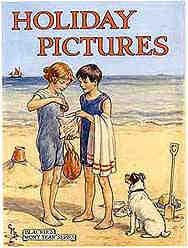
Flower Fairies of the Spring, London, Blackie, 1923
Spring Songs with Music, London, Blackie, 1923
Flower Fairies of the Summer, London, Blackie, 1925
Westcott, M. K.., Child Thoughts in Picture and Verse, London, Blackie, 1925
Flower Fairies of the Autumn, London, Blackie, 1926
Summer Songs with Music, London, Blackie, 1926
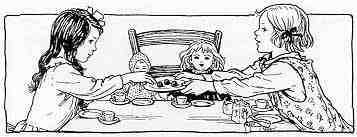
The Book of the Flower Fairies, London, Blackie, 1927
Autumn Songs with Music, London, Blackie, 1927
Old Rhymes for All Times. London, Blackie, 1928
The Children’s Book of Hymns, London, Blackie, 1929
Barker, Dorothy, Our Darling’s First Book, London, Blackie, 1929
Beautiful Bible Pictures, 1932
The Little Picture Hymn Book, London, Blackie, 1933
Rhymes New and Old, London, Blackie, 1933
A Flower Fairy Alphabet, London, Blackie, 1934
A Little Book of Old Rhymes, London, Blackie, 1936
Barker, Dorothy, He Leadeth Me, London, Blackie, 1936
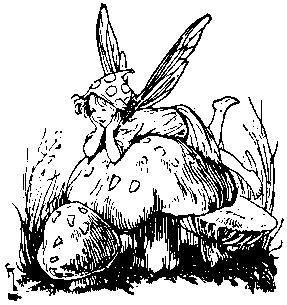
A Little Book of Rhymes New and Old, London, Blackie, 1937
The Lord of the Rushie River, London, Blackie, 1938
Flower Fairies of the Trees, London, Blackie, 1940
When Spring Came In at the Window, London, Blackie, 1942
Stevenson, Robert Louis, A Child’s Garden of Verses, London, Blackie, 1944
Flower Fairies of the Garden, London, Blackie, 1944
Groundsel and Necklaces, London, Blackie, 1946
Flower Fairies of the Wayside, London, Blackie, 1948
Flower Fairies of the Flowers and Trees, London, Blackie, 1950
Lively Stories, Macmillan, 1954
The Flower Fairy Picture Book, London, Blackie, 1955
Lively Numbers, Macmillan, 1957
Lively, Words, Macmillan, 1961
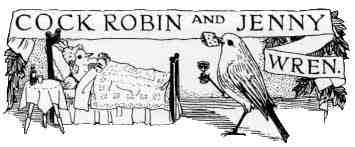
The Sand, the Sea and the Sun, Gibson, 1970
Flower Fairies of the Winter, London, Blackie, 1985
Frederick Warne, 1990
Simon the Swan, London, Blackie, 1988
Flower Fairies of the Seasons, Bedrick/Blackie, 1988
A Little Book of Prayers and Hymns, London, Frederick Warne, 1994
A Flower Fairies Treasury, London, Frederick Warne, 1997
the art of CMB >
biography ![]() flower fairy books
flower fairy books